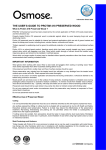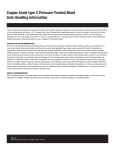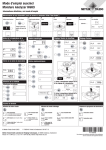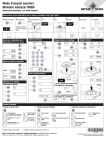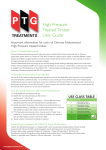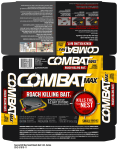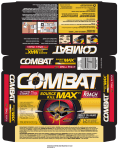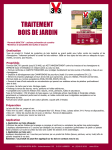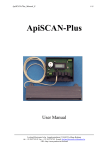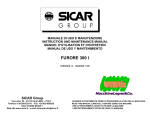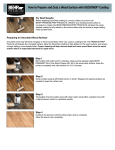Download THE USER'S GUIDE TO CELCURE® AC
Transcript
THE USER’S GUIDE TO CELCURE® AC-10 PRESERVED WOOD What is Celcure AC-10 Preserved Wood? Celcure AC-10 preserved wood has been preserved by the correct application of Celcure AC-10 wood preservative and then allowed to dry. Properly treated Celcure AC-10 preserved wood is protected against attack by wood decaying fungi and wood destroying insects. Celcure AC-10 preserved wood, treated to an appropriate specification, can be used for structural timber, sole plates, garden furniture, playground equipment, patios, decks, fencing, garden edging, and landscaping structures such as pergolas. IMPORTANT INFORMATION Wear gloves when working with wood. Only preserved wood that is visibly clean and free of surface residue should be used. Wear a dust mask and goggles when cutting or sanding wood. Some preservative may migrate from the treated wood into soil/water or may dislodge from the treated wood surface upon contact with skin. Wash exposed skin areas thoroughly. All sawdust and construction debris should be cleaned up and disposed of after construction. Wash work clothes separately from other household clothing before re-use. If you desire to apply a paint, stain, clear water repellent or other finish to your preservative treated wood, we recommend following the manufacturer’s instructions and label of the finishing product. Before you start, we recommend that you apply the finishing product to a small test area before finishing the entire project to ensure that it provides the intended result. If the wood is to be used in an interior application and becomes wet during construction, it should be allowed to dry before being covered or enclosed. Mould growth can and does occur on the surface of many products, including treated or untreated wood, during prolonged surface exposure to excessive moisture conditions. To remove mould from treated wood surfaces, wood should be allowed to dry. Typically, mild soap and water can be used to remove remaining surface mould. Preserved wood should not be used where it may come into direct or indirect contact with drinking water, except for uses involving incidental contact such as fresh water docks and bridges. Do not use preserved wood under circumstances where the preservative may become a component of food, animal feed or beehives. Do not use preserved wood as mulch. Do not burn preserved wood (see Disposal). All sawdust and construction debris should be cleaned up and disposed of after construction. Effective Use of Preserved Wood Cutting Preserved wood should not be cut or otherwise reworked as this will expose unpreserved wood. If cutting cannot be avoided, then precautions should be taken to keep airborne dust levels below the Workplace Exposure Limits for wood dust. In particular, avoid inhalation of dust when using high speed cross-cut saws or mechanical sanders. Any surface exposed by drilling or cutting must be retreated with a cut end preservative. Failure to do this will reduce the effectiveness of the preservative. It is recommended that the re-preserved ends are not put in the ground or in direct contact with water. Rip sawing, thicknessing and planing are not permitted unless the timber is subsequently re-preserved to the original specification. Metal Fastenings and Hardware Certain metal products (including fasteners, hardware and flashing) may corrode when in direct contact with wood treated with copper based preservatives. To prevent premature corrosion and failure it is important to follow the recommendations of the manufacturer for all metal products. Do not use preserved wood in direct contact with aluminium. IS96/0813 Colour Celcure AC-10 preserved wood will initially have an even green appearance; this will weather to a natural honey-brown colour before finally fading to a driftwood grey after long term exposure to the sun. Timber treated with Celbronze* dyes will have a brown appearance. Installation In decking, and as a general rule, nail boards bark side up (annual rings are upward) to reduce splitting; however the best face should be placed up when a defect of the wood is apparent. Fasten thin boards to thicker boards to maintain structural integrity. It is a good idea to drill pilot holes for your fixings when screwing near the edge or end of a board. This will minimise splitting. If the wood has become wet by exposure to rain, butt decking boards together during construction. As drying occurs, some shrinkage can be expected. If the wood is dry, space the boards to allow for expansion in wet weather. Gluing Celcure AC-10 preserved wood can be glued with most commonly used adhesives once dry. Always follow the adhesive manufacturer’s recommendations. Disposal Celcure AC-10 preserved wood that is no longer usable, such as off-cuts, broken boards, sawdust or preserved wood material taken out of service, may be disposed of in landfills or burned in commercial or industrial incinerators or boilers in accordance with national and local regulations. For up to date information please contact the Technical Services Department. Biocidal Product Regulation (EU 528/2012) Article 58 Information Celcure AC-10 preserved wood is a “treated article” which incorporates biocidal products. Wood correctly preserved with Celcure AC-10 is protected against wood destroying insects and wood rotting fungi. Contains: Basic copper carbonate (Copper (II) carbonate – Copper (II) hydroxide (1:1)), Benzalkonium chloride, Propiconazole, Tebuconazole. ADDITIONAL INFORMATION Celcure AC-10 preserved wood products are produced by independently owned and operated wood preserving facilities. Osmose provides a range of products and technologies for the treatment, protection and enhancement of timber. Information and advice is available on all aspects of our products from the Technical Services Department. For more information visit www.osmose-europe.com Telephone: +44 (0) 1628 486644 Emergency: +44 (0) 1628 890907 * Osmose, Protim, Celcure and Celbronze are registered trademarks of Protim Solignum Ltd Protim Solignum Ltd trades as Osmose An Osmose company IS96 © August 2013 Protim Solignum Ltd Fieldhouse Lane, Marlow, Bucks SL7 1LS, UK l Tel: 00 44 (0)1628 486644 l Fax: 00 44 (0)1628 476757 l www.osmose-europe.com l email: [email protected] Registered in England - 3037845 l Registered Office: Fieldhouse Lane, Marlow, Bucks SL7 1LS UK


